Trying to access a website or service but blocked by a firewall? You’re not alone. Whether it’s school, work, or government restrictions, firewalls can limit what you do online. That’s where a VPN can help, but can a VPN bypass a firewall reliably?
In this guide, we’ll break down exactly how VPNs work with firewalls, when they succeed, when they might fail, and what you can do to improve your access. If you’re looking for a clear answer and practical tools, you’re in the right place.
How Firewalls Work
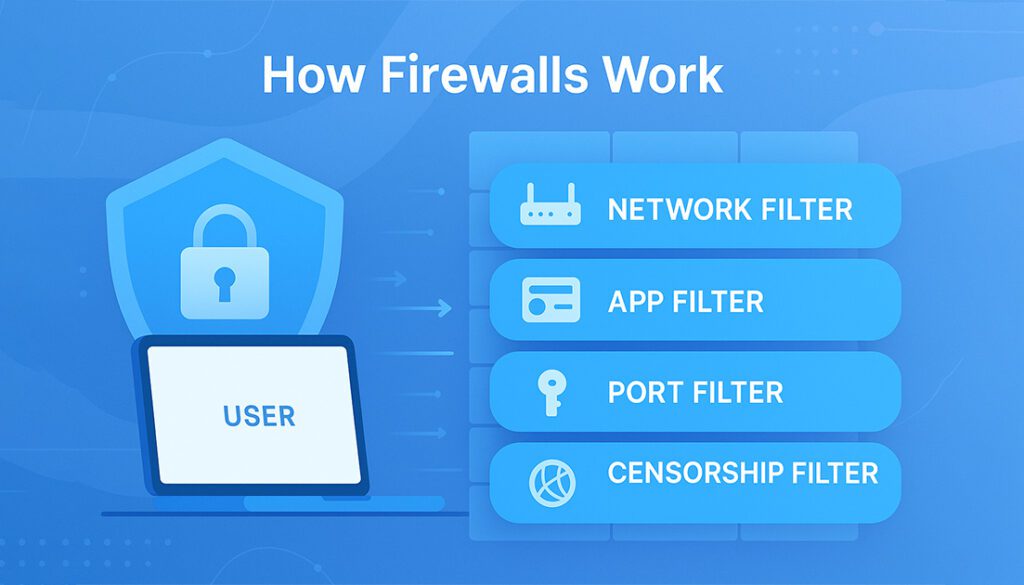
Firewalls are security tools designed to control traffic between your device and the internet. They act like digital gatekeepers, blocking or allowing data based on rules.
There are several types of firewalls, but they all serve the same basic purpose: restrict access to certain websites, apps, or services.
🔒 Common Firewall Types:
🌐 Network Firewalls
Used in schools, offices, and public Wi-Fi to block entire domains or IP ranges.
📱 Application-Level Firewalls
Target specific apps like WhatsApp, Zoom, or BitTorrent.
🚫 Government Censorship
Block news, social media, or VPNs at a national level in countries like China and Iran.
🔌 Port-Based Firewalls
Restrict internet access based on port numbers, commonly affects VPNs and torrents.
🧠 Deep Packet Inspection (DPI)
Analyzes traffic signatures even if encrypted, used to block VPNs stealthily.
Firewalls don’t always block content outright, sometimes they slow it down, log it, or limit it without warning.
For a side-by-side breakdown, check Firewall vs Proxy vs VPN.
How VPNs Bypass Firewalls
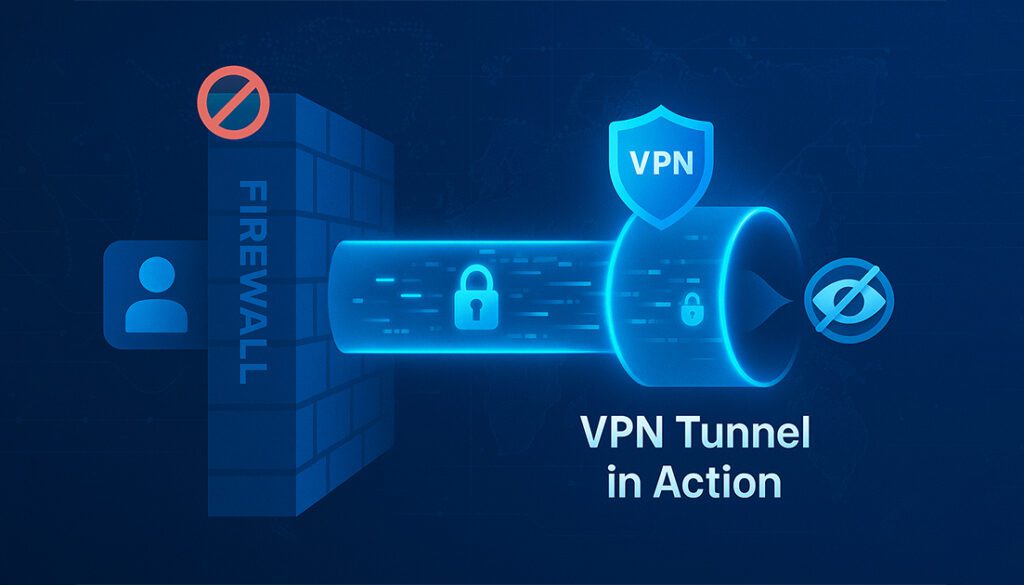
A VPN (Virtual Private Network) helps bypass firewalls by creating a secure, encrypted tunnel between your device and the internet. This tunnel hides what sites you’re visiting and prevents the firewall from filtering or blocking your traffic, at least in most cases.
🔍 Here’s How It Works:
🔐 Encryption
VPNs scramble your data so firewalls can’t inspect or block it based on content.
🚇 Tunneling
Your traffic is routed through a secure server, bypassing the local network’s filters.
🌍 New IP Address
You appear to browse from a different location — helping bypass geo-restrictions or bans.
🕵️ Obfuscation (Stealth Mode)
Some VPNs disguise traffic to make it look like regular HTTPS, helping beat DPI filters.
When a firewall can’t see or understand your traffic, it can’t block it effectively.
Not sure if a proxy is a better choice? See our VPN vs Proxy comparison.
What VPNs Can and Can’t Bypass
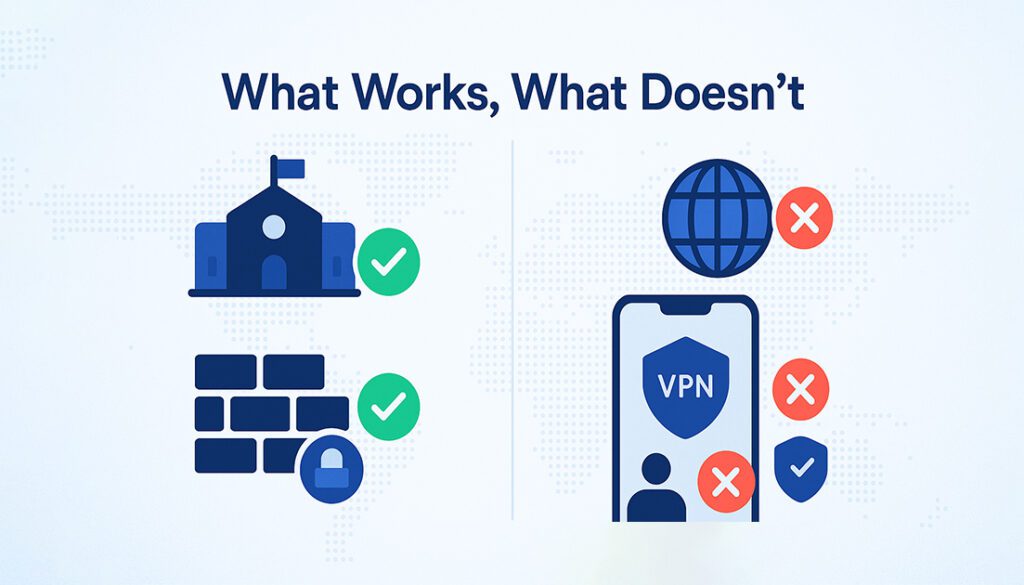
VPNs are powerful, but not all firewalls are created equal. Depending on how strict the network is and how advanced your VPN, results may vary.
✅ VPNs Can Bypass
- Basic firewalls at schools or workplaces
- Port-blocking via ports like 443
- Geo-restrictions and IP-based blocks
- Domain or app-level blocks (e.g., WhatsApp, TikTok)
❌ VPNs May Struggle With
- Deep Packet Inspection (DPI) without stealth mode
- National censorship (e.g., Great Firewall of China)
- Firewalls blocking all unknown or VPN IPs
- Mobile networks with packet filtering
🔍 Tip: If your VPN isn’t working, try switching to stealth mode, changing ports, or upgrading to a provider with obfuscated servers.
Best Practices for Using VPN to Bypass Firewalls
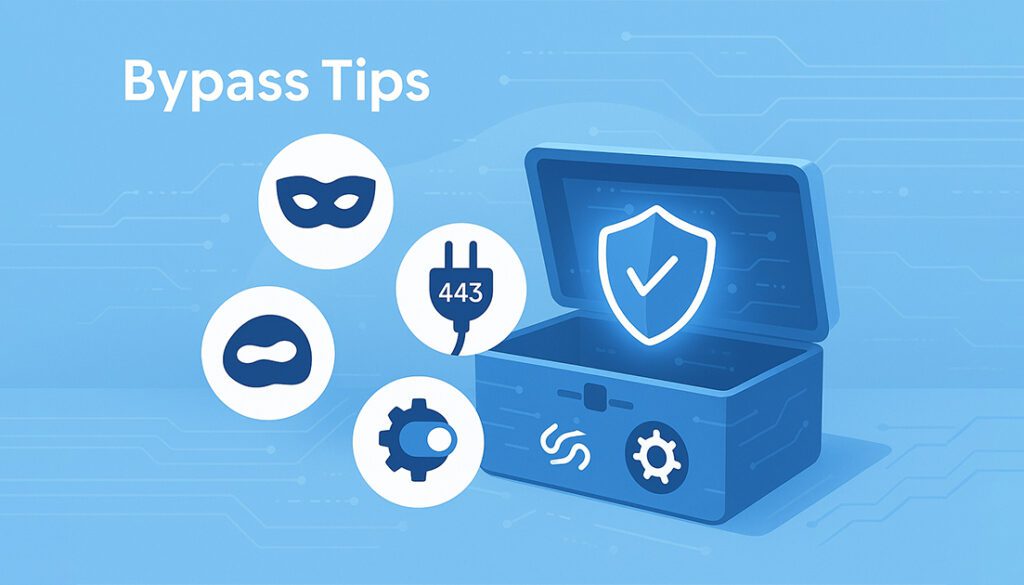
If your VPN isn’t breaking through, it might not be the tool — it might be how you’re using it. Follow these best practices to improve your chances:
🔧 Tips to Maximize VPN Effectiveness:
🕵️ Use Obfuscated Servers
They hide your VPN traffic from firewalls using deep packet inspection (DPI).
🔒 Switch to Port 443
Firewalls rarely block HTTPS, VPN traffic on this port is less suspicious.
🎭 Enable Stealth Mode
Look for options like “Camouflage” or “NoBorders” in your VPN settings.
🔁 Try Multiple Protocols
WireGuard, OpenVPN, and IKEv2 behave differently, test what works best.
🚫 Avoid Free VPNs
They usually can’t bypass complex firewalls or provide stealth features.
🌍 Test Multiple Locations
Switch servers or regions, some are less likely to be blacklisted.
🔀 Use Split Tunneling
Encrypt only what you need, bypass detection on less-sensitive traffic.
Learn how authorities track encrypted traffic in Can a VPN Be Tracked?
Top VPNs for Bypassing Firewalls
Not all VPNs can beat tough firewalls, but a few are built for the job. These providers offer stealth modes, obfuscation, and support for countries with strict censorship:

NordVPN
- Obfuscated servers for DPI firewalls
- Special “Onion Over VPN” for censorship zones
- Works in China, UAE, and schools

Surfshark
- Camouflage Mode hides VPN traffic
- NoBorders Mode helps in restricted regions
- Lightweight, fast, and affordable

ExpressVPN
- Lightway protocol blends speed with stealth
- Trusted in censorship-heavy regions
- Consistent access behind strict firewalls
Real-World Use Cases
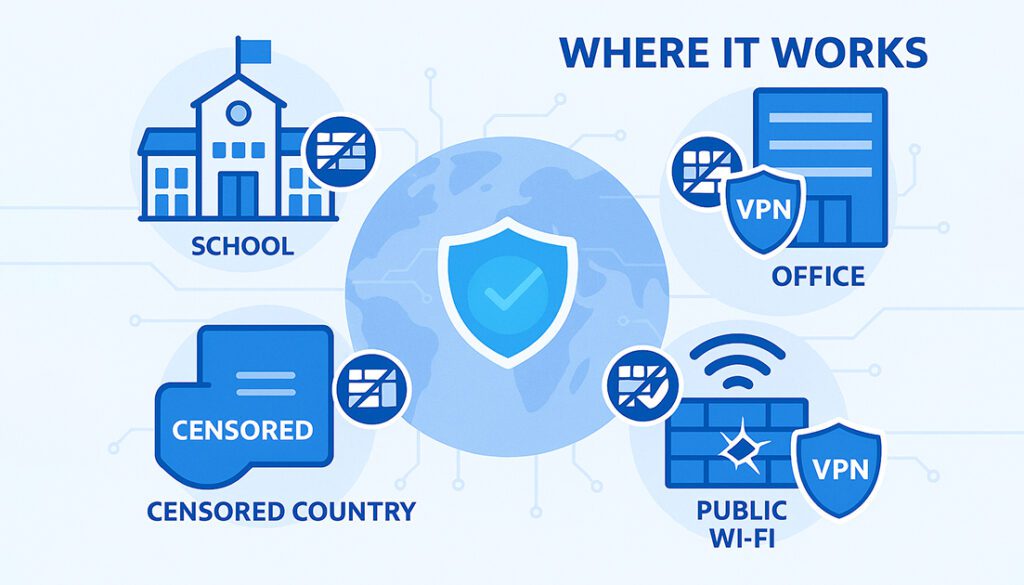
Firewalls aren’t just for governments, they’re everywhere. Here’s where VPNs prove their worth in bypassing restrictions:
🌎 Where VPNs Help Most:
- 🏫 School Networks: Blocked social media, gaming sites, or chat apps? VPNs help you study and socialize freely.
- 🏢 Workplace Restrictions: Access research, tools, or even personal email without triggering IT policies.
- 🌍 Government Censorship: In places like China, Iran, or UAE, VPNs are essential for open access to the global web.
- 📡 Public Wi-Fi: Many cafes, airports, or hotels block video calls or apps, VPNs route around it.
- 📱 Mobile Data Limits: Some carriers restrict video or VPN traffic, using stealth mode often gets around that.
FAQs
Can a VPN really bypass all firewalls?
A VPN can bypass most firewalls, but not all. Advanced systems using deep packet inspection (DPI) may block VPN traffic unless obfuscation or stealth modes are used.
Why is my VPN not bypassing my school or work firewall?
Your VPN may lack stealth mode, or the network might block VPN protocols. Try switching servers, ports, or enabling obfuscation features.
Which VPN protocol is best for getting around firewalls?
OpenVPN over TCP port 443 and WireGuard with stealth are effective. Some VPNs also offer proprietary obfuscated protocols for stronger evasion.
Is it legal to use a VPN to bypass a firewall?
In most countries, yes. But bypassing corporate or government firewalls may violate terms of service or local laws. Always check your region’s regulations.
Can firewalls detect VPNs?
Yes, especially with DPI. Some firewalls can recognize and block VPN traffic unless it’s disguised using obfuscation or stealth technology.
Does using a VPN slow down internet speed behind firewalls?
Sometimes. Encryption, rerouting, and blocked ports can cause slower speeds, but a good VPN minimizes this with optimized servers.
What if a VPN still doesn’t work behind a firewall?
Try switching to obfuscated servers, using port 443, or changing protocols. If that fails, consider a more advanced VPN provider built for censorship.
What are signs a firewall is blocking my VPN?
Frequent disconnections, no internet while connected, or apps not loading properly often indicate that your VPN is being blocked.
Final Thoughts
So, can a VPN bypass a firewall? Absolutely, especially if you choose the right tool and use it correctly. VPNs aren’t magic, but they’re powerful. From encrypted tunnels to stealth protocols, they give you control over your internet again, even when networks try to take it away.
Whether you’re navigating campus blocks, office restrictions, or national censorship, the right VPN setup can break through. Just remember: not all VPNs are built the same. Pick one designed to bypass firewalls, and you’re set.
Curious how secure VPNs really are? Read Can a VPN Be Hacked?
Need a VPN That Can Bypass Firewalls?
We’ve tested the best VPNs for getting around blocks — whether it’s DPI, geo-restrictions, or workplace filters. Find the one that works for your needs.
View Top VPNs

